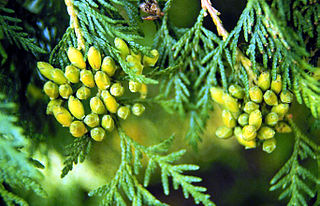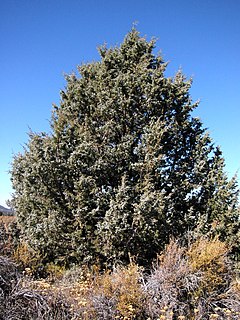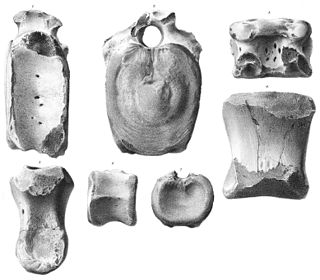Related Research Articles

The western grebe is a species in the grebe family of water birds. Folk names include "dabchick", "swan grebe" and "swan-necked grebe".

Platanus × acerifolia, the London plane, London planetree, or hybrid plane, is a tree in the genus Platanus. It is often known by the synonym Platanus × hispanica. It is usually thought to be a hybrid of Platanus orientalis and Platanus occidentalis. Some authorities think that it may be a cultivar of P. orientalis.

Platanus occidentalis, also known as American sycamore, American planetree, western plane, occidental plane, buttonwood, and water beech, is a species of Platanus native to the eastern and central United States, the mountains of northeastern Mexico, extreme southern Ontario, and possibly extreme southern Quebec. It is usually called sycamore in North America, a name which can refer to other types of tree in other parts of the world.

Thuja occidentalis, also known as northern white cedar, eastern white cedar, or arborvitae, is an evergreen coniferous tree, in the cypress family Cupressaceae, which is native to eastern Canada and much of the northcentral and northeastern United States. It is widely cultivated as an ornamental plant.

The western fence lizard is a common lizard of Arizona, California, Idaho, Nevada, Oregon, Utah, Washington, Northern Mexico, and the surrounding area. As the ventral abdomen of an adult is characteristically blue, it is also known as the blue-belly.

Juniperus occidentalis, known as the western juniper, is a shrub or tree native to the western United States, growing in mountains at altitudes of 800–3,000 metres (2,600–9,800 ft) and rarely down to 100 metres (330 ft). It is listed as Least Concern on the IUCN Red List because it is a widespread species with an increasing population.

Thespesius is a dubious genus of hadrosaurid dinosaur from the late Maastrichtian-age Upper Cretaceous Lance Formation of South Dakota.

Cephalanthus occidentalis is a species of flowering plant in the family Rubiaceae, that is native to eastern and southern North America. Common names include buttonbush, common buttonbush, button-willow and honey-bells.

Banksia occidentalis, commonly known as the red swamp banksia, is a species of shrub or small tree that is endemic to the south coast of Western Australia. It has smooth bark, linear, sparsely serrated leaves, golden flowers in a cylindrical spike, and later up to sixty follicles in each spike.

The Spanish mole is a species of mammal in the family Talpidae. It is found in Portugal and Spain.
Euplassa occidentalis is a species of plant in the family Proteaceae. It is endemic to Ecuador.

The western round-eared bat is a bat species found only on the Pacific coast of northwestern Ecuador.

Pterolophia is a genus of longhorn beetles of the subfamily Lamiinae, containing the following species:
Arbutus occidentalis or the Mexican Madrone is a small tree species in the heath family, that is endemic to Mexico. It is only known from a few areas in Western Mexico where it grows on Rocky slopes. It produces red edible berries that are valuable food to wildlife.
Grevillea occidentalis is a shrub of the genus Grevillea native to an area in the Great Southern region of Western Australia.
Italy participated in the Eurovision Song Contest 2017 with the song "Occidentali's Karma", written by Francesco Gabbani, Filippo Gabbani, Luca Chiaravalli and Fabio Ilacqua. The song was performed by Francesco Gabbani. Italian broadcaster Radiotelevisione italiana (RAI) announced in October 2016 that the winning performer(s) of the Big Artists section of the Sanremo Music Festival 2017 would earn the right to represent the nation at the Eurovision Song Contest in Kiev, Ukraine. The selected performer would also be given the right to choose their own song to compete with at Eurovision. In February 2017, Francesco Gabbani emerged as the winner of Sanremo with the song "Occidentali's Karma". The artist accepted the invitation to represent Italy at Eurovision and decided that "Occidentali's Karma" would be his contest entry.
Pterolophia guineensis is a species of beetle in the family Cerambycidae. It was described by James Thomson in 1864, originally under the genus Alyattes.

"Occidentali's Karma" is a song performed by Italian singer Francesco Gabbani. The song was released as a digital download on 10 February 2017 through BMG Rights Management as the lead single from his third studio album Magellano (2017). The song was written by Gabbani, Filippo Gabbani, Fabio Ilacqua, and Luca Chiaravalli. It won the Sanremo Music Festival 2017 and represented Italy in the Eurovision Song Contest 2017.

Protea madiensis, commonly known as the tall woodland sugarbush, is a flowering shrub which belongs to the genus Protea. It is native to the montane grasslands of Sub-Saharan Africa.
References
- ↑ BioLib.cz - Pterolophia occidentalis. Retrieved on 8 September 2014.